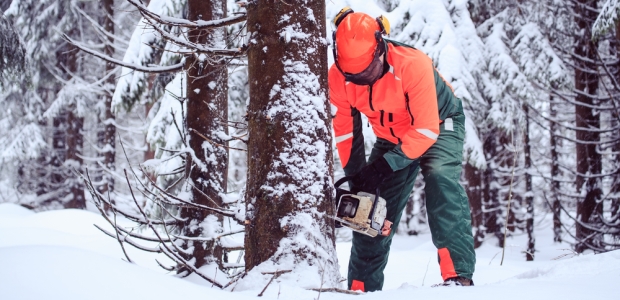
(Safely) Home for the Holidays?
Remember, workers are at increased risk for frostbite and hypothermia when they have health problems such as cardiovascular problems, diabetes, or high blood pressure.
Safety should be priority #1 for all of us during the holiday season, which unofficially begins with the Nov. 27 "Black Friday" shopping mania (and an annual reminder to retailers from OSHA about managing the crowds safely), then moves on to workplace and home issues of fire safety, electrical safety, seasonal driving hazards, food safety, and fall prevention.
Let's start with basic safety precautions for people who must work outside during the winter months.
Avoiding Frostbite and Hypothermia
When workers are exposed to cold temperatures, their bodies start to lose heat faster than they can produce it. Prolonged exposure eventually exhausts the body's stored energy, causing hypothermia -- an abnormally low body temperature. This condition affects the brain, making the individual unable to think clearly or move well. While hypothermia is most likely to occur at very cold temperatures, it can occur at cool temperatures above 40° F when someone becomes chilled from rain, sweat, or being submerged in cold water.
Frostbite is a bodily injury caused by freezing. It most often affects the nose, ears, cheeks, chin, fingers, or toes and can result in permanent damage or event amputation. The risk rises for those with reduced blood circulation and people who are not dressed properly for extreme cold.
Remember, workers are at increased risk for frostbite and hypothermia when they have health problems such as cardiovascular problems, diabetes, or high blood pressure.
Coping with Wind Chill, Ice, and Snow
Most of us are familiar with the wind chill index charts. The wind chill is the temperature your body feels when the air's temperature is combined with the wind speed. As the speed of the wind increases, it can carry heat away from your body much more quickly, causing skin temperature to drop.
You'll find more information and a wind chill chart at http://emergency.cdc.gov/disasters/winter/duringstorm/outdoorsafety.asp.
Other winter safety tips:
- Use rock salt or other ice-melt on walkways and stairs, to avoid slips and falls.
- If possible, carry a mobile phone to make emergency phone calls if you or someone you see becomes stranded in snow or ice.
- When driving in snow and ice, slow down and be respectful of other drivers and pedestrians.
Many winter injuries result from falls on icy sidewalks, steps, driveways, and porches. Use rock salt or some other chemical de-icing product to keep steps and walkways as free of ice as possible. Sand can be used on walkways to reduce the risk of slips.
Electrical Safety, Fall and Fire Prevention
Stringing holiday lights and clearing snow from rooftops are two tasks that present falls-from-height hazards during the holiday season. Fires also tend to increase during this season of the year:
The Electrical Safety Foundation International's seasonal tips often include these items:
- Holiday decorations are meant for temporary use. Leaving your decorations up for extended periods leaves wires unnecessarily exposed to the elements, which can decrease the product's shelf life and increase the risk of electrical hazards.
- With time, Christmas trees continue to dry out, making them increasingly flammable. Trees decorated with holiday lights have an increased risk because they're in direct contact with an electrical source. Check with your local community to find a recycling program through which to dispose of your tree early in the new year.
- Always unplug decorations by using the gripping area. Pulling on the cord could damage the wire and present a shock or fire hazard.
- As you take down holiday lights, inspect the wiring and discard any that have cracked, frayed, or appear to have damaged wire insulation.Make sure to label or store indoor decorations separate from those intended for outdoor use.
- Store electrical decorations in a dry area that is not accessible by children or pets.
The National Fire Protection Association also stresses fire safety precautions during the holiday season.
Standard Travel Precautions
- Listen for radio or TV reports of travel advisories issued by the National Weather Service.
- Do not travel in low-visibility conditions.
- Do not drive on ice-covered roads, overpasses, and bridges if possible.
- If you must travel by car, use tire chains and take a mobile phone with you.
- If you must travel, let someone know your destination and when you expect to arrive. Ask them to notify authorities if you are late.
- Check and restock the winter emergency supplies in your car before you leave.
- Never pour water on your windshield to remove ice or snow, because it may shatter.
- Don't rely on a car to provide sufficient heat; the car may break down.
- Always carry additional warm clothing appropriate for the winter conditions.